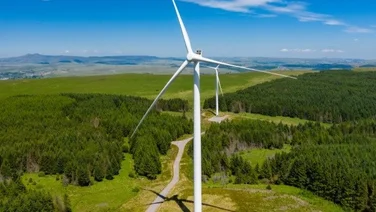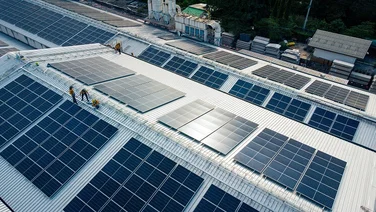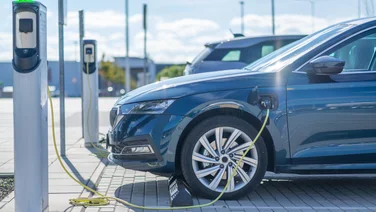- Energy bills are predicted to rise by 5% between April and July 2025
- A typical dual-fuel household could pay as much as £1,823 per annum
- The official announcement from Ofgem will come 25 February

Cornwall Insight has predicted that the Energy Price Cap will rise by 5% between April and July 2025, meaning energy prices for a typical dual-fuel household could pay as much as £1,823 per year.
The official announcement from Ofgem will come 25 February, but Dr Craig Lowrey, principal consultant, Cornwall Insight said the increase of £85 marks a third consecutive jump in the Energy Price Cap, with the situation looking unlikely to improve this year.
“This increase in bills has been anticipated for some time as a volatile international market saw prices rise,” Lowrey said.
He explained that it is likely to increase due to a “combination of colder weather and reduced renewables production” which has resulted in gas storage levels falling across Europe and an increase in wholesale prices.
Uncertainty around the April Energy Price Cap and beyond is also being compounded by several Ofgem consultations on its future structure.
Looking ahead, the possibility of an end to the war in Ukraine has made gas prices fall, according to Lowrey.
Despite the April Energy Price Cap Prices are expected to fall slightly in the third quarter of the year, before rising again in October.
Lowrey said that the past two quarters have already “exerted pressure” on inflation, and as stated by the Bank of England’s Monetary Policy Committee earlier this month, any further hikes in energy costs could drive inflation higher in the coming months.
“Households have been hit hard over the past few months, and with bills set to rise for a third consecutive time the pressure is not letting up,” he stated.
“While we’re not seeing a return to the peak energy crisis, the market is more volatile than it has been in quite some time, and households are bearing the brunt of cold weather and low gas storage levels across Europe.”
However, the government’s emphasis on expanding renewable energy capacity is expected to reduce energy bills in the long run by replacing expensive fossil fuels with more affordable sustainable energy and decreasing our dependence on the volatile international wholesale market.
Lowrey said this will take “time, funding and market reforms”, meaning it could be years before households see a decrease in energy costs.
“It might be tempting to look at rising bills and conclude the push towards renewables is not working, and we should scale back on the transition.
“But the reality is higher energy costs only reinforce the need to accelerate our expansion of clean, reliable energy across the UK.”
What will the cost of electricity and gas be after the April Energy Price Cap?
The cost of electricity per kWh is currently 24.86p per kWh, while gas is 6.34p per kWh. From April, it’s predicted this will increase to 26.57p per kWh and 7p per kWh respectively.

There are different tariffs households can sign up to, which can vary how much you’ll pay. These are the types:
- Standard variable tariffs or ‘default tariff’
- Pay on receipt
- A prepayment meter to pay-as-you-go
- Fixed rate tariffs
- Economy 7 or multi-rated for electricity
- Everyone must pay a standard charge. From April, it’s predicted this will be 53p daily for electricity and 29p for gas.
Your energy bills will be based on how much you use, but you can reduce it by switching to renewable energy or making small changes at home.
Find out more about electricity costs per kWh, how energy costs are determined in the UK and the average energy bill cost using our guide.

Get a solar panel quote
Answer a few simple questions, and a trusted solar panel installer will be in touch with a bespoke quote for your home or business.
How can you save energy at home?
Energy saving solutions can be low-cost or you can invest in low-carbon technologies that will usually cost a lot more.
Some energy saving solutions include:
- Draught-proofing: Sealing draughty gaps around the house could save up to £65 a year. Ways to draught-proof your home is a door draught excluder (prices range from £4-£30) or window draught seal (prices range from £4 to £18).
- Install LEDs: Swapping your bulbs to LEDs can save £4 to £5 a year. You’re also less likely to need to replace them as often as standard halogen bulbs.
- Look after your fridge: Avoid putting warm food in it straight away as it works harder to cool down. Make sure it’s in the right place and kept clean, too.
- Replace worn-out windows: Roughly 40% of energy escapes from windows, so if you haven’t got double-glazing, it might be worth considering if it’s worth the investment.
- Insulate your home: Different types of insulation include cavity wall, external wall, spray foam and pipe insulation.
Dive into nine other ways to reduce your energy bills using our guide. If you’re a business, check out our guide on the nine best ways to reduce your energy costs. Some ways include energy audits and purchasing energy-efficient equipment.
Invest in renewable energy
The government has a goal to be net zero by 2050 and you can help reach this by investing in low-carbon technologies. These include solar panels and heat pumps. Investing in these technologies can also help reduce energy bills.
According to 2024 National Home Energy Survey, 51% would be influenced to use renewable energy to save money on bills.
Some of the technologies you could install are:
- Solar panels
- Heat pumps
- Domestic wind turbine
- Solar thermal panels
- Biomass
- Biofuel
- Generate power from a nearby water source
- A Micro-CHP power plant
Check out our guide, eight renewable energy ideas for your home, for a more detailed explanation on each technology. There are many choices and plenty of grants or finance options available, too.






